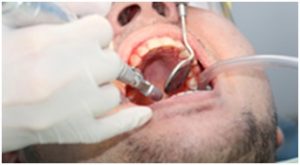This 2017 study demonstrated the potential benefits of a 30-second mindfulness technique called the self-guided Mindfulness-based Interoceptive Exposure Task (MIET). The goal of MIET is to focus on altering the relationship with pain and to not take pain personally.1

Subjects included those diagnosed with chronic back pain, fibromyalgia, arthritis, post-surgical pain, whiplash, and migraine headaches. They practiced the 30-second MIET daily over 2 weeks, every time pain sensations became prominent.
Compliance to MIET was found to be high and the participants reported of having significantly less pain, anxiety regarding pain, stress, and depression over the course of the 2-week study and even at 2-month follow up.
In another 2019 study asymptomatic volunteers had their pain tolerance evaluated using a cold pressor test.2 Prior to the painful stimuli the subjects were randomly allocated into 3 groups.
Group 1: Mindfulness‐based interoceptive exposure task (MIET)
Group 2: Distraction instructions
Group 3: No instructions/control group
The mindfulness group had significantly higher pain tolerance than both the distraction and the control groups.
These results show that a 30-second mindfulness session was sufficient to change an experimentally induced pain experience in healthy volunteers.

If you are at this time experiencing any discomfort anywhere in your body, try this 30-seconds technique which I would prefer to not call MIET but to call Mindfulness Experience and Acceptance (MEA). You can do MEA while eating, exercising, showering or experiencing pain.
I tried this approach twice last year while having dental work done. My dentist thought I was crazy for refusing the numbing injection. I simply wanted to try MEA while experiencing significant pain. There’s no denying, it bloody hurt, but I was OK with it! In fact I would do it again if I had to. 
So how does one practice MEA of pain?
MEA step #1 (Mindfulness): Focus all your attention at the centre of the most intense area of discomfort. Instead of ignoring the sensation, become fully aware of it. Try to prevent any emotional reactions while remaining aware of it. Try not to judge the sensation as good or bad.
MEA step #2 (Experience): Experience the sensation by describing its characteristics. What colour is it? Is it soft or hard? Is it warm or cold? Is it moving or static? Is it light or heavy?
MEA step #3 (Acceptance): Instead of resenting the sensation and emotionally reacting to it, accept it. Acceptance does not mean that you “give up” or “give in”, it means you accept the sensation as it is now at this moment and you are okay with it. You are accepting and okay with whatever you are experiencing at this moment
…and life is nothing but a series of moments.
Pain is what the world does to you, suffering is what you do to yourself (by the way you think about the ‘pain’ you receive) – Buddha teaching
- Cayoun B. Et al Mindfulness Immediate and Lasting Chronic Pain Reduction Following a Brief Self-Implemented Mindfulness-Based Interoceptive Exposure Task: a Pilot Study 2017pp1-13 Oct
- Shires A et al The relative efficacy of mindfulness versus distraction: The moderating role of attentional bias. Eur J Pain. 2019 Apr;23(4):727-738.

